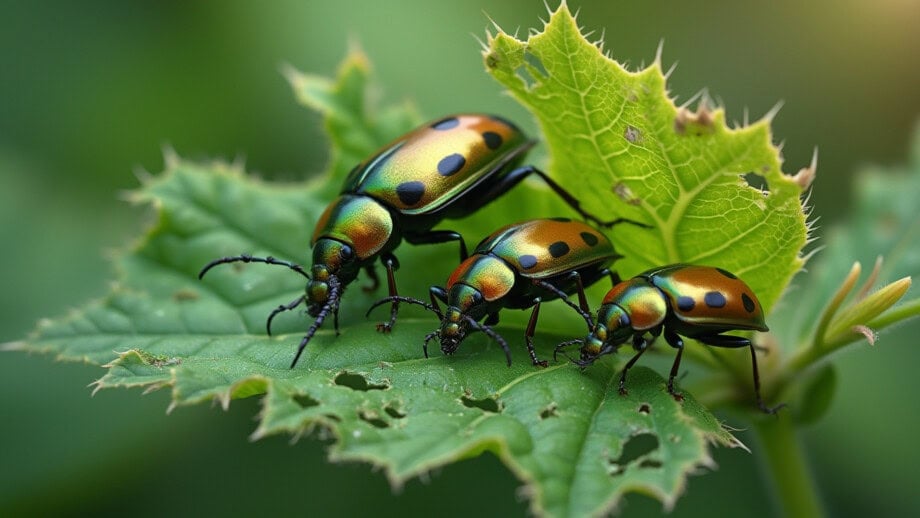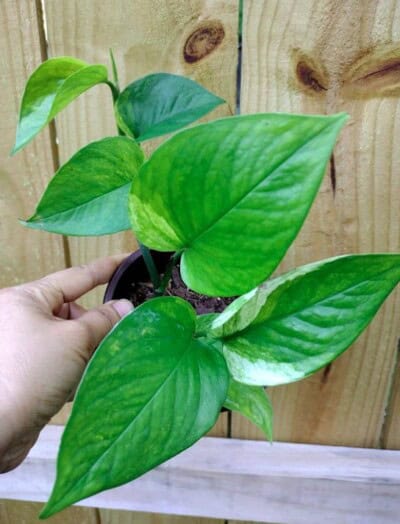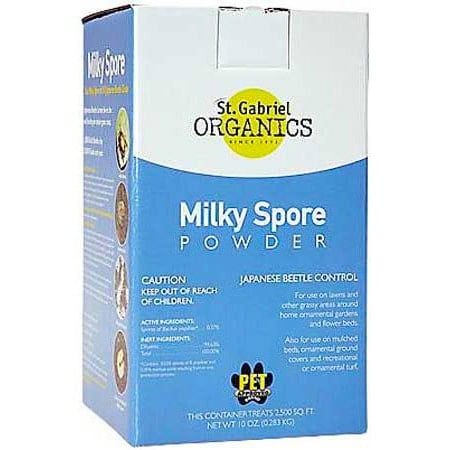Japanese Beetle
Learn how to identify and get rid of Japanese beetles on lawns and landscaped areas using these proven, natural and organic methods.

An incredibly destructive pest of ornamental plants and turf grasses, Japanese beetles (Popillia japonica) were first discovered on nursery stock in New Jersey almost a century ago. Originally introduced from Japan, they have now spread to most states east of the Mississippi River. Isolated pockets have also been found in Wisconsin, Colorado, Oregon and California. Currently, the estimated damage and cost of controlling Japanese beetles in the U.S. exceeds $460 million per year.
Note: In its native Japan, where there is little turf grass available for grub feeding and a large number of natural enemies, this insect is not a serious plant pest.
Identification
Adult Japanese beetles (1/2 inch long) are metallic blue-green with coppery wing covers. Most active on warm, sunny days they eat flowers — roses are a favorite — and strip the leaves of over 300 different plant species, leaving behind only veins and stems. Larvae are plump, white grubs (3/4 inch long) that spend up to ten months of the year underground. Grubs feed on the roots of a large number of plants, but are especially injurious to lawns, which show irregularly shaped patches of wilted, dead or dying grass.
Life Cycle
Japanese beetles overwinter in the larval (grub) stage. In early spring larvae move up near the soil surface to feed on plant roots. By late May pupation begins and adult beetles emerge towards the end of June, remaining active until September. Eggs are laid in soil amid the roots of grasses and hatching takes place within two weeks. These young larvae feed on roots until cold weather arrives, then burrow deeper in the ground to wait out winter. One generation per year, the life-cycle requiring two years to complete.
How to Control
- In the early morning or late evening, shake beetles from plants onto ground sheets and destroy.
- Place pheromone traps around the perimeter of your property as adults emerge (May-July).
- Floating row cover (Harvest-Guard®) can be used as a physical barrier to prevent adult beetles from damaging plants.
- Spread beneficial nematodes on lawns or mulch around plants to kill immature stages. These microscopic, worm-like parasites actively hunt, penetrate and destroy grubs in the soil.
- Studies have shown that Lawn Aerator Sandals (a.k.a. Spikes of Death) are equal to or more effective than some insecticides for managing Japanese beetle grubs. Researchers reported killing 56% of the grubs by walking over infested plots of lawn 3-5 times.
- Milky Spore (Bacillus popilliae) is a naturally occurring host specific bacterium that attacks the destructive white grubs in turf. Apply 10 oz per 2,500 sq ft anytime of year when the ground is NOT frozen.
- Surround WP (kaolin clay) forms a protective barrier film, which acts as a broad spectrum crop protectant for preventing damage from a large number of insect pests.
- AzaMax contains azadirachtin, the key insecticidal ingredient found in neem oil. This concentrated spray is approved for organic use and offers multiple modes of action, making it virtually impossible for insect resistance to develop. Best of all, it’s non-toxic to honey bees and many other beneficial insects.
- Safer® Grub Killer is an organic ready-to-use spray that is very effective against the larval stages of this pest. Easy to use, just attach the bottle to your garden hose and treat problem areas. Covers approximately 2000-4000 square feet and continues working for up to 7 days.
- As a last resort, spot treat adults with botanical pesticides. Apply to all leaf surfaces and deep into the plant canopy where insects hide.
Note: The USDA maintains quarantines to restrict the movement of this destructive pest, but they are expected only to delay the spread rather than prevent it.


















